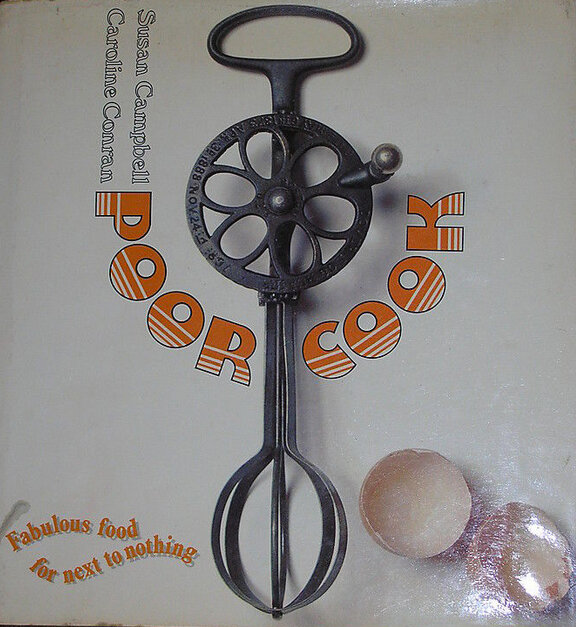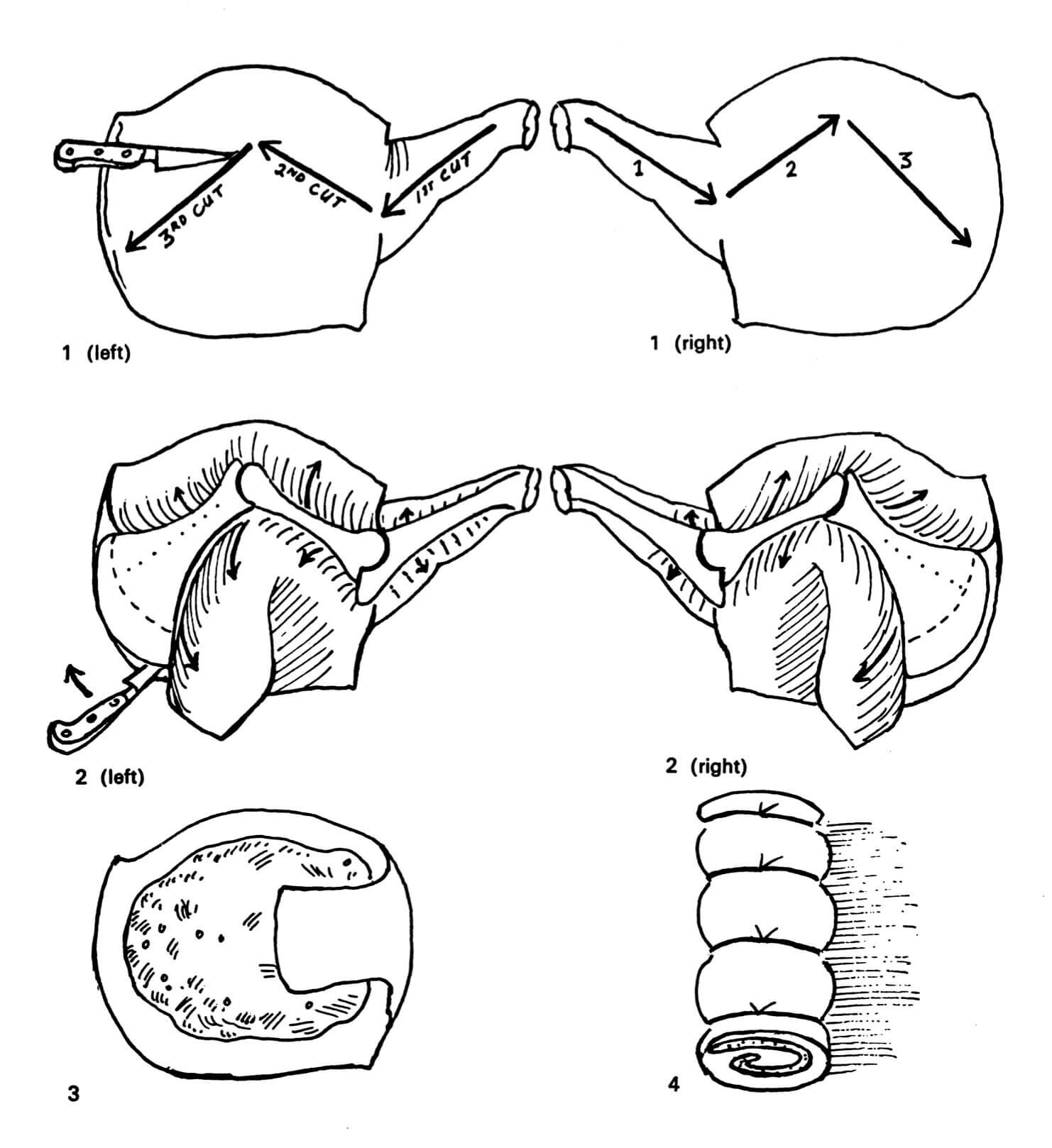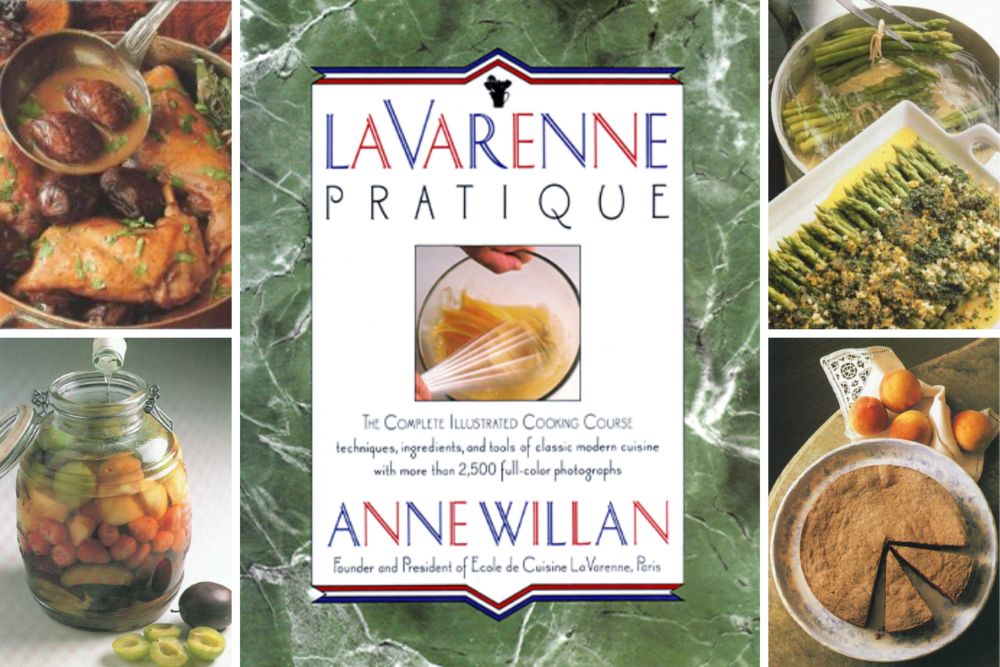Advertisement
Behind the Cookbook: 50 Years of Poor Cook
15 October 2021 · Behind the Cookbook
In 1971, half a century ago, two young mothers wrote a book that captured the spirit of the time, and that still resonates today. Poor Cook focuses on good simple cooking from scratch, and making the most of inexpensive ingredients. Its ‘do what you can with what’s available’ ethos is very much in keeping with today’s imperative to reduce food waste. We spoke to the two co-authors who told us how they came to write the book….
Susan Campbell (illustrator and co-author)
It was hard to find a really useful up-to-date cookery book in the ’60s, particularly for young wives with hypercritical husbands and small children to feed. Elizabeth David and Robert Carrier were releasing their readers from the privations of wartime food rationing, which had continued into the ’50s, with recipes based on Mediterranean ingredients (unheard of in most British food shops) and luxurious dishes using lots of butter, cream, and brandy. Fine for those with large incomes and villas abroad to match, but less suitable for day-to-day cooks on small, post-war budgets. There were plenty of books dating from the pre-war days, when many middle-class families had the luxury of a live-in cook, but food rationing had made many of our favourite old recipes redundant, living only in our memories. Food that actually had to be cooked in a kitchen was still relatively cheap, but timesaving and convenience foods in tins and packages were becoming expensive alternatives to cooking from scratch.
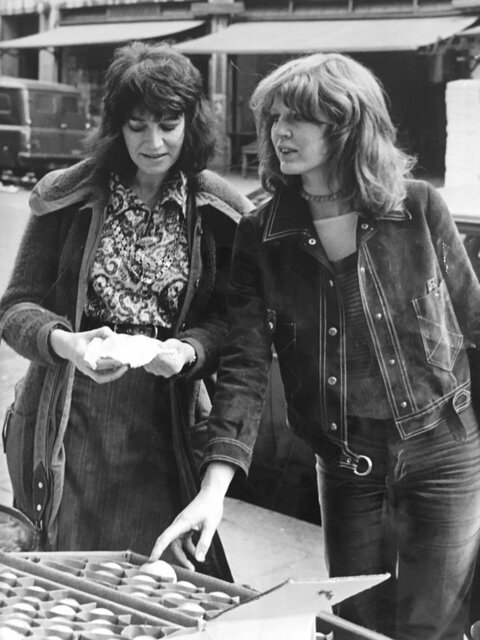
The authors, Susan Campbell (left) and Caroline Conran, pose for a publicity shot in Soho’s Berwick Street Market (1972)
It struck me that what we wanted was a cost-conscious book that would both revive old-fashioned, humble soups, stews with dumplings, and comforting puddings, and concentrate on cooking the cheapest foods such as eggs, offal, herring, and ordinary vegetables, as well as introduce dishes that were just beginning to appear in ethnic restaurants; recipes for chilli con carne, pizza, curries and stir-fries were rarely seen, if at all, in those days. I also hoped to do the illustrations – some decorative, others diagrams for recognising cheap cuts, filleting, boning, etc.
I was not an experienced enough cook to write the book on my own, but one of my London neighbours, Elizabeth Ray, had already edited a book bringing together Eliza Acton’s recipes, and she agreed to collaborate with me. However, she moved very shortly afterwards to the country and that idea fell through.
I then happened to meet Caroline, who was at the time the food editor of the magazine that went on to become Harpers & Queen, and I asked her if she liked the idea of joining me in collecting recipes for a cookbook based on the cheaper cuts of food. I had already thought of the title, Poor Cook. It originated, not as was often supposed, from the English for cucina povera, but from the title of Nell Dunn’s first novel, Poor Cow (1967). Caroline said yes, and we sought a publisher. We already had an agent (Hilary Rubinstein) as I had just done the illustrations for his wife’s book on food for freezers, and he suggested that we meet Caro Hobhouse at Macmillan.
Caro had never edited a cookery book before, but she fervently went to work on this one. She was later to become the doyenne of cookery book writers, ending up with her own publishing house, Norman and Hobhouse. We then started looking for someone to design the book, and ended up with my au pair’s boyfriend, an as-yet-unheard-of graphic designer, and another future publisher, Peter Kindersley. I am sure that it was his innovative layout that helped to make the book a success, though his trendy index, in tiny black text on very dark brown paper did have its critics. As did the price: ‘Outrageous, a book about cheap food costing £2.50!’ But then that was 50 years ago…

Caroline Conran (co-author)
Susan and I were young mothers when we set out to write Poor Cook, both of us with appreciative, food-loving husbands, hungry children, small budgets and a passion for cooking.
By 1970, young and green, I was home editor of Queen magazine, responsible for the food pages, among other things. I could write and cook and I knew how to collect, collate, and test recipes. Susan was full of ideas, she could draw beautifully, and had a different store of favourite things to cook.
At the time, most recipe books called for the finer cuts of meat, large poultry such as chickens, and fish such as Dover sole or turbot, and these were expensive, and seen as luxuries. But no recent cookbooks had come up with the idea of cooking with cheap or less well-known ingredients. Seeing that most of our friends, and their parents and certainly most young adults (and we ourselves), did not have much to spend on the food we cooked for our families, we sensed that there was room for a book that showed how really good inexpensive food could be.
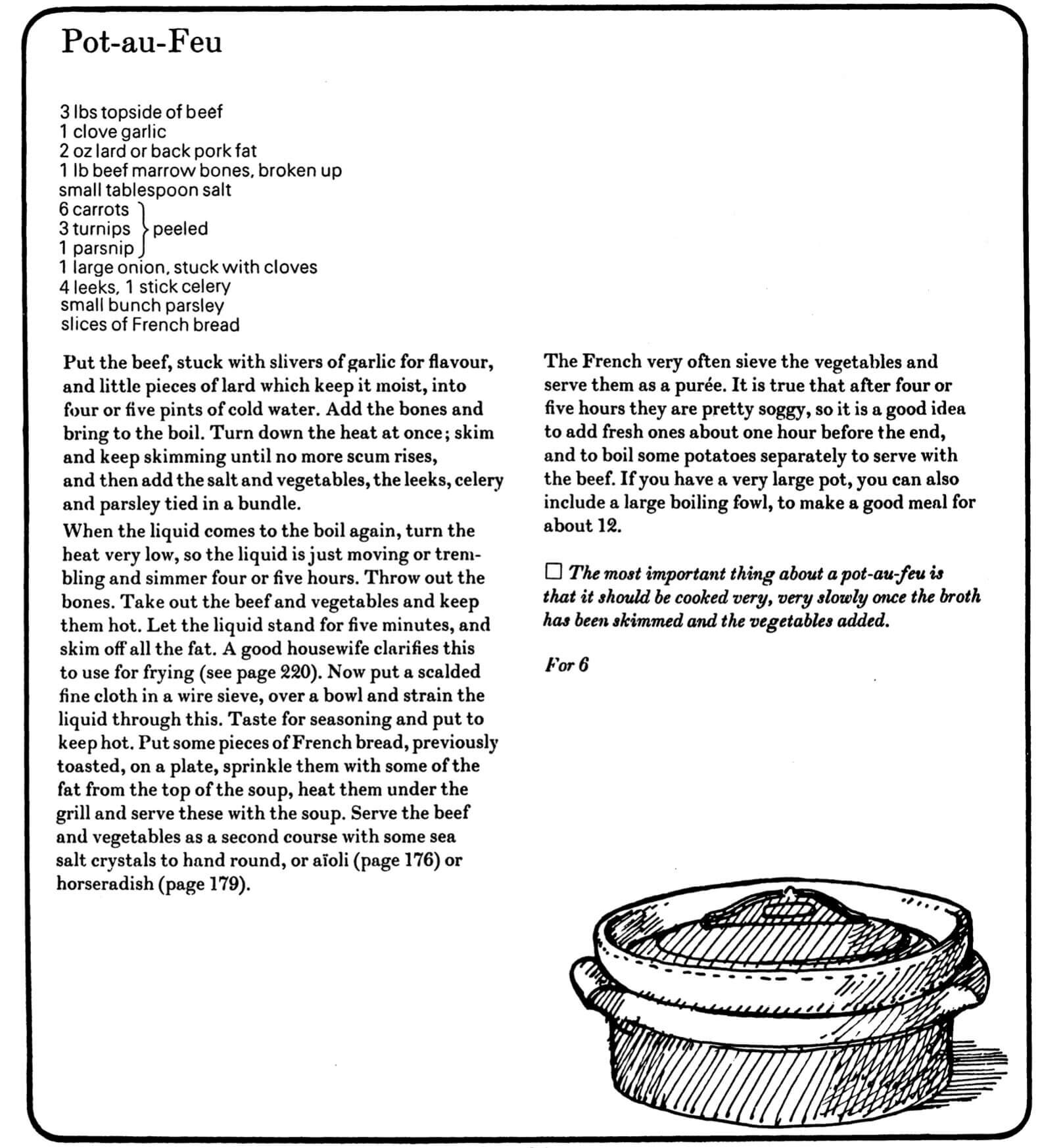
Poor Cook’s recipe for Pot au Feu © Susan Campbell and Caroline Conran. All rights reserved.
So we set about finding recipes that elevated less well-known cuts of meat, made a chicken go further, and used fish that was plentiful and cheap, such as herring and, believe it or not, cod. We liked beans and pulses, dumplings, and dishes like paella that used a tiny amount of chicken or seafood and made it go a long way. We loved anything that was free, such as blackberries, crabapples, and mushrooms.
We wrote on the kitchen table and beat up our omelettes among the children’s drawing books, and we came up with this book, which has lasted for 50 years.

All 300+ recipes from Poor Cook by Susan Campbell and Caroline Conran are available in full on ckbk, along with cover-to-cover coverage of the additional content in every chapter. For more ideas to help with cooking on a budget, check out ckbk’s Frugal cookbook bookshelf.
Sign up for ckbk's weekly email newsletter
Related posts
Advertisement

